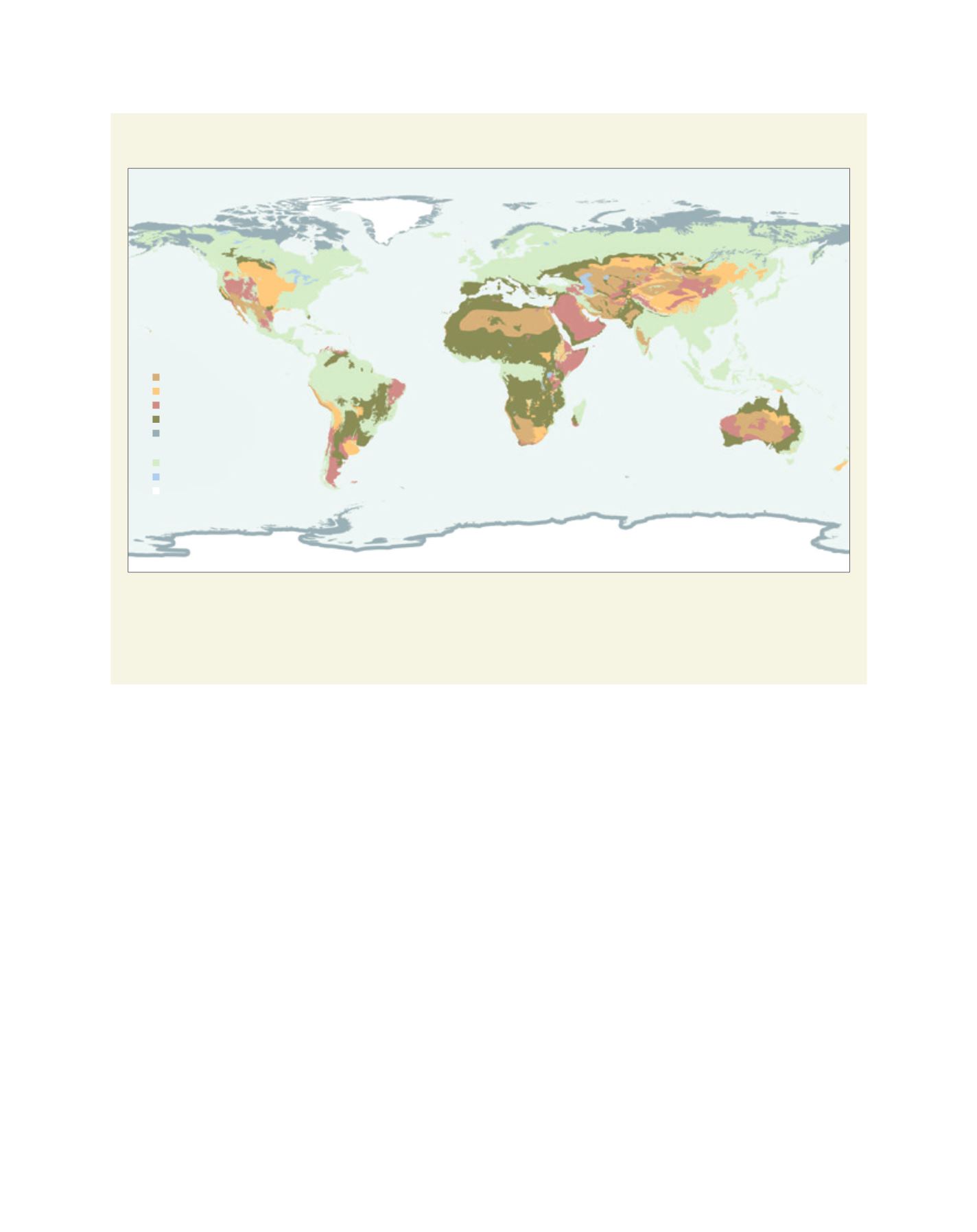

[
] 136
Sustainable management of rangelands requires innova-
tive solutions to manage the high levels of climatic risk
that are experienced over these landscapes and to address
the many other unique features of dryland ecology. While
such innovations are often found in customary manage-
ment practices, these practices have often been undermined
by inadequate development and policy interventions.
Re-enabling customary practices and supporting them to
adapt and flourish in a modern economy is central to SRM.
Local institutions are vital for rangeland development and
effective solutions tend to be grounded in improvements in
local governance and communal resource rights.
This approach to SRM requires a rethinking of orthodox
investment paradigms and the role of the private sector. Local
rangeland users already invest heavily in terms of labour and
social capital to produce a wide array of environmental and
economic benefits; new investments should be responsive to
these existing investments and the risk management strate-
gies of these local rangeland users. Innovation is needed
in designing clever investment options and capturing the
interest of investor groups to provide appropriate rangeland
management solutions. Moreover, enabling investments may
be required to establish conditions for improved asset invest-
ment and to put in place necessary safeguards.
An alternative approach is indeed needed that focuses
on the optimization of investment returns in a variety of
ecosystem services through greater capture of local bene-
fits and reward for positive externalities. Advancing this
investment approach requires improved local governance,
stronger consultation with rangeland users, better informed
decision-making and the facilitation of financial flows,
possibly through payment for ecosystem services (PES) or
other compensation for environmental benefits. Progress
towards these targets requires greater motivation within
government agencies in particular, to establish enabling
investments for sustainable growth, and also within the
private sector to strengthen value chains and to target
appropriate asset investments.
Priorities for intervention include strengthening commu-
nal management of rangeland resources through the revival
and strengthening of local institutions, adaptation of
traditional governance practices according to the chang-
ing environmental and political context, and more secure
communal resource management rights.
It is also important to improve local decision-making
in the rangelands; better informed decision-making can
be achieved through more inclusive, stronger participa-
tion of local rangeland users in public planning, improved
The world’s rangelands
Source: Society for Range Management
13
There is considerable disagreement over how rangelands should be defined which leads to divergent estimates of their extent. According to the World
Resources Institute (1986) rangelands cover 51 per cent of the total land area of the world. This shows that rangelands are not confined only to
drylands, but the majority of rangelands are in drylands and the majority of drylands are rangelands.
Shrubland
Woodland and Savanna
Grassland
Desert
Rangelands
Non-rangelands
Forest
Tundra
Rocks and ice
Lakes
L
iving
L
and
















